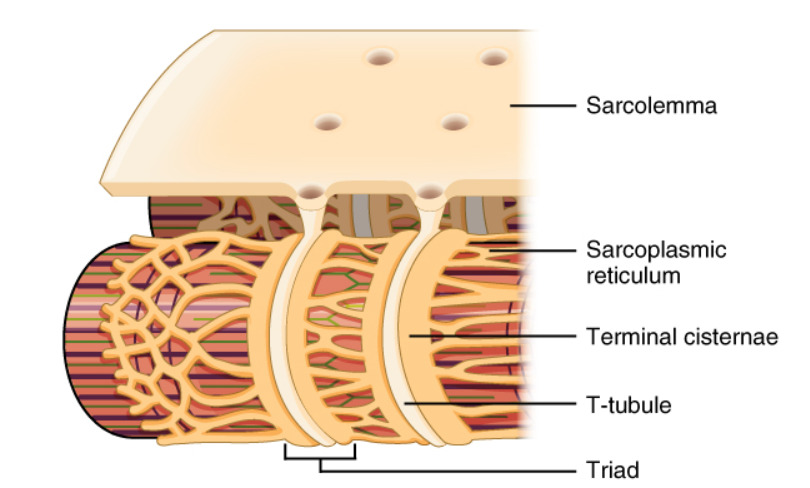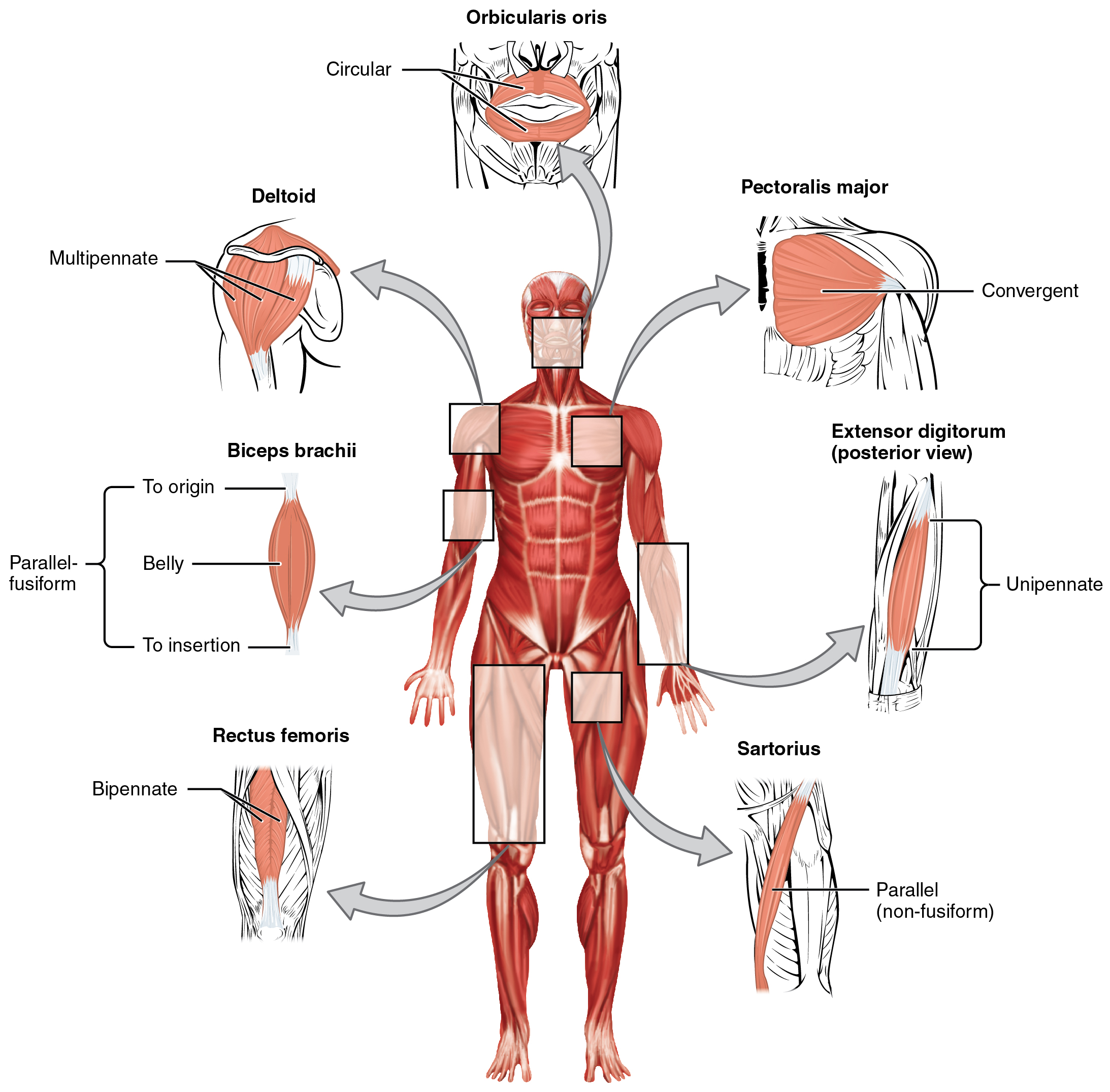Playlist
Show Playlist
Hide Playlist
Force Production and Motor Unit
-
Slides Physiology Muscleoskeletal.pdf
-
Download Lecture Overview
00:01 So now let’s go through how force is produced. 00:06 Force is produced in two different ways in skeletal muscle. 00:10 The first way force is produced is how you would think about it, as you go through power strokes. 00:17 As you contract a muscle, you’ll develop tension. 00:23 Interestingly though, tension is developed be dependent upon the length of the muscle. 00:30 So you get this kind of formation where you have a peak and two valleys. 00:36 So at a certain length, your muscle will be the strongest or able to develop the most tension. 00:44 And then, as you stretch it too far, it doesn’t develop as much tension, or if it is too contracted, it doesn’t develop as much tension. 00:52 So there’s an optimal length for tension development. 00:56 So this is the active process. 00:59 When we put back in now a passive tension, and that is it’s less of an ability to be stretched. 01:08 If you stretch it to a greater degree, it develops more tension just like a rubber band. 01:14 If you pull on a rubber band, it starts to resist you as you get to a higher and higher length. 01:21 That is the passive component of muscle tension. 01:25 To determine the total muscle tension, you have to add these two together. 01:29 And here, you have a peak in force at a given length associated with active force production and then you have a second peak associated with some active and some passive components. 01:43 The other item that we need to consider is what is driving this process. 01:48 It’s all based upon a nerve. 01:51 We discussed alpha motor neurons earlier, now I’m going to group them together as an entity, as a motor unit. 02:00 So that motor unit encompasses all the different fibers that it innervates, and one alpha motor neuron is going to innervate a number of fibers. 02:13 The motor unit then stimulates the muscle by releasing acetylcholine binding to an acetylcholine receptor that causes an action potential on the sarcolemma. 02:26 But what happens if you stimulate this particular muscle by electrical stimulation instead of how the nerve normally would stimulate with acetylcholine? Here, each of the individual lines in red are stimulations by electrical stimulation. 02:46 You can see if you pulse a couple of stimuli that are fairly wide in terms of their duration, you get individual twitches. 02:58 If you start to train them faster, you will get an individual twitch, will not be able to fully relax before it gets another twitch, before it gets another twitch. 03:09 So you can start to summate twitches if you train them or to give them in a shorter duration of time. 03:20 You can also cause something called tetanus if you stimulate the muscle at a higher frequency. 03:27 There is both fused and unfused tetanus dependent upon the cycle frequencies. 03:33 The difference between the two visually, you can see here, is that unfused tetanus involves a jagged kind of appearance every time you get a pulse and a fused tetanus is more of a flat line. 03:47 But also notice that with fused tetanus, you do get more contraction than you do or forced production than you do with unfused tetanus. 03:57 So why is this important for us clinically? Well, this process starts to get at the point of you need to develop tension, and how you develop tension is via calcium release. 04:10 So there are ways to release more calcium in certain times than there are in others and your body will utilize this component of individual twitches and having multiple stimulations to a muscle to make greater and greater amounts of force all mediated through calcium.
About the Lecture
The lecture Force Production and Motor Unit by Thad Wilson, PhD is from the course Musculoskeletal Physiology.
Included Quiz Questions
Which of the following statements is TRUE regarding muscle developing maximum tension during active contraction?
- The muscle develops maximum tension at the optimal length.
- The muscle develops maximum tension when it is stretched the most.
- The muscle develops maximum tension when it is contracted length.
- The muscle tension is directly proportional to the length of the muscle.
- The muscle tension is inversely proportional to the length of the muscle.
Which of the following is the first component of the motor unit?
- Alpha-motor neuron
- Individual muscle fiber
- T-tubules
- Sarcolemma
- Sarcoplasmic reticulum
Which type of stimulation generates the highest tension in the muscle over time?
- Fused tetanus
- Unfused tetanus
- Single muscle twitches
- Temporal Summation
- Double burst suppression
Customer reviews
5,0 of 5 stars
| 5 Stars |
|
5 |
| 4 Stars |
|
0 |
| 3 Stars |
|
0 |
| 2 Stars |
|
0 |
| 1 Star |
|
0 |





